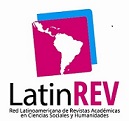The symbolic representations of the woman in Quechua
DOI:
https://doi.org/10.26439/en.lineas.generales2021.n6.5590Keywords:
conceptual metaphor, cognitive domains, conceptualization of women, Andean thinkingAbstract
This work aims to account for the linguistic expressions of crushing in Quechua language and culture in which the main protagonist of these images is the woman who is conceptualized through metaphorical constructions. Bearing in mind that Andean society is agrocentric, when analyzing the language expressions referring to crushing, we realize that the major part of these conceptualizations symbolizes women as elements of nature. For its proper interpretation, it is necessary to understand the bucolic conception of love in Andean thought. By reference of informants, loving beginnings, among Quechua, are often in pastoral contexts, as well as in times of rain and carnival. Likewise, are conventional social spaces such as certain holidays and ritual activities that will allow the meeting among young people, in this regard as a context of rapprochement and crush. The flirting generated in this scenario will cause the emergence of effervescent feelings and emotions among couples, which will be verbalized in various metaphorical language expressions. In Quechua chants alluding to bucolic representations, metaphors are frequent, which describe these adventures and cares durin flirting. This work is based on the principles of cognitive linguistics, especially on the works of Lakoff and Johnson.
Downloads
References
Estermann, J. (2017). Hermenéutica diatópica y filosófica andina. Esbozo de una metodología del filosofar intercultural. Revista FAIA (Revista de Filosofía AfroIndo-Americana), 6(27), 1-17.
Fauconnier, G. (1994). Espacios mentales. Universidad de Cambridge. Ibarretxe-Antuñano, I., y Valenzuela, J. (s. f.). La semántica cognitiva. Anthropos.
Lakoff, G., y Langacker, R. (1987). Foundations of Cognitive Grammar (vol. I). Stanford University Press.
Monje, C. (2011). Metodología de la investigación cuantitativa y cualitativa. Guía didáctica. Universidad Surcolombiana.
Soriano-Salinas, C. (2012). La metáfora conceptual. En I. Ibarretxe-Antuñano y J. Valenzuela (Coords.), Lingüística cognitiva (pp. 87-109). Anthropos.



